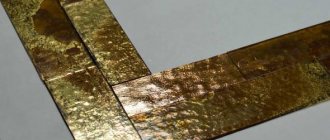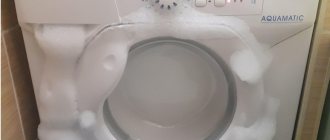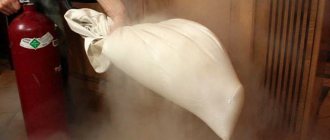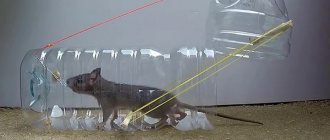Many people prefer to use liquid soap: some like this consistency, others like that it foams better and is softer than regular soap. Another advantage is that you can easily make it yourself. And at the same time, making good liquid soap at home is easier than making bar soap.
What is liquid soap made from?
The product, which is a liquid consistency, is similar in properties to shampoo, containing synthetic surfactants, fragrances, and skin softening components. The overall complex of components affects the properties of the composition.
A homemade product can also look beautiful and have an amazing aroma, but be one hundred percent natural.
- Liquid soap contains derivative products - potassium salts. For solid types, sodium salts are used.
- Fatty acids (oleic, palmitic, lauric, stearic) are added to the liquid composition. Manufacturers also include glycerin, which moisturizes the skin.
- Various dyes are used for coloring.
- Aromatics create a pleasant smell.
- Surfactants, which act as emollients, renew epidermal cells.
- Adding preservatives prevents the product from spoiling.
- To neutralize fungus and bacteria, antibacterial components are introduced into the soap.
- Adding emulsifiers softens water hardness.
- To give liquid soap the desired consistency and increase its viscosity, sodium salt of hydrochloric acid is added.
Homemade Soap Ingredients
Liquid soap is a product of the chemical industry, which is similar in properties to shampoo. It contains synthetic surfactants, fragrances and components that soften the skin.
The properties of the liquid product depend on the composition.
What components should be contained in liquid soap?
| Group of substances | Component Examples | Operating principle |
| Surfactant | sodium stearate sodium lauryl sulfate alkanesulfonate methyl sulfate | dissolves contaminants and facilitates their removal |
| the basis | coconut or palm kernel oil, soap base | used in soap making as a basis for other components - surfactants, softeners, adsorbents |
| softeners | glycerol honey oils (almond, olive, burdock, grape seed, coconut) | prevent the evaporation of moisture from the surface of the skin, increase the fluid content in epidermal cells |
| flavorings | fragrances essential oils citrus extract | gives liquid cosmetics a pleasant aroma |
| antiseptics | chlorhexidine lemon juice alcohols | destroy pathogenic microorganisms |
| dyes | synthetic dyes mineral pigments beta carotene | paint the liquid mass in different colors |
| abrasive particles | ground coffee coconut flakes salt semolina | remove dead skin cells from the epidermis |
| other fillers | herbal infusions Activated carbon citrus juice fatty acid vitamins | provide additional properties - wound healing, deodorizing, anti-inflammatory, adsorbing |
A homemade liquid product is a good alternative to bar soap, which dries out the skin. Homemade cosmetics contain much less harmful ingredients than store-bought ones. Therefore, it is better for caring for sensitive skin.
Store-bought liquid cosmetics are a petroleum product containing low-quality components.
If you make your own soap, you can use almost any ingredients, avoiding harmful fillers - plasticizers, preservatives, mineral oils, silicone.
How to make liquid soap at home with your own hands
Soap making is based on the hydrolysis process, which involves fatty acid esters reacting with alkalis. Making your own soap uses soap remnants and soap bases as the base material. This greatly simplifies the process of preparing a cosmetic product.
Making handmade liquid soap also involves the use of various oils.
Soap is prepared using various methods. The ingredients used and the expected properties of the resulting product play a big role in this.
The components in the home soap making process are often selected individually.
To make soap you will need:
- Use two cooking pots. 2 pans with different diameters are suitable for a water bath.
- To mix the ingredients, you should use wooden sticks.
- Dosing of components can be done using kitchen scales, spoons, and measuring cups.
Oils for liquid soap are selected both as a base and an auxiliary element.
Important! To make homemade soap, it is better to use recipes that are subject to adjustments. The number of components can be increased or decreased. Additions of other components are possible.
From baby soap
Recipe for making liquid children's toilet soap:
- you need to take orange zest (1 tbsp) and boil it in 1 liter of water for 10-15 minutes;
- the cooled liquid is filtered;
- Soap shavings (500 g) are added to the composition;
- Boil the resulting compound in a water bath. The fire should be low. Cooking time 3-5 minutes;
- Glycerin (20 g) is added to the liquid brought to a boil;
- too thick liquid mass can be diluted with 100-150 ml of clean water;
- After a day, the cooled soap is poured into containers containing dispensers.
Do-it-yourself liquid soap, depending on the ingredients, can be expensive, but it will be a truly environmentally friendly, healthy product.
Add 15 drops of tea tree oil to your homemade product. If the child's skin does not react to the effects of bee products, you can add melted honey (10-15 drops). This hygienic composition will give the skin a velvety feel.
The oil is used to rejuvenate the skin, increase its tone, relieve inflammation and control fluid balance.
Important! The prepared soap is suitable for hands and body. You can use it 2 times a day.
From ordinary and remnants
Many people are interested in knowing how to make liquid soap from leftover soap. The option is very practical and economical. To cook, you will need to take the basic ingredients and carefully follow the recipe.
Making liquid soap from soap remnants is not difficult, but the process takes quite a long time.
- 300 gr. the remnants are dried and crushed using a coarse grater.
- The resulting soap shavings are poured with warm water and mixed.
- The container with the soap mixture is placed in a water bath and heated for several minutes.
- Before the mixture boils, a herbal decoction (50 ml) is poured into it, as well as 15-20 ml of glycerin. St. John's wort and calendula are used for the decoction.
- Boiling lasts no more than 2-3 minutes. After removing from the heat, the liquid soap cools for 5-10 hours.
- The mixture is poured into a container with a dispenser.
Any soap remnants are suitable for a homemade liquid product.
To improve the quality of the liquid product, antiseptic substances are added. They use miramistin, chlorhexidine, and furatsilin solution.
Soap with vodka
Disinfecting liquid soap is made for household needs. Medical alcohol acts as an antiseptic, which is diluted with clean water, or 40-proof vodka is used instead of water.
According to reviews from people involved in home soap making, baby soap is most suitable as a raw material for the base.
Following the recipe, you need:
- grind 300 g of soap and pour 1⁄2 liters of water into it;
- Boil the soap shavings until they are completely dissolved;
- Add glycerin (60 ml) to the hot liquid mixture and pour in 20-25 ml of vodka
- After cooling, the liquid soap is poured into the prepared container. This soap composition cleans tiles, laminate, and other floor surfaces well.
You can use additional ingredients at your discretion.
Degtyarnoe
This soap neutralizes fungal skin diseases and has a healing effect.
Liquid soap made by yourself does not last long.
Its recipe:
- Potassium paste (20%) is mixed in a container with glycerin (10%), brought to a boil. A water bath is used.
- warm water is poured in (63%). Bring to a boil again;
- Birch tar (6%) and preservative Euxyl PE 9010 (1%) are added.
Potassium paste is the main component. The preservative allows the soap to be stored for a long time.
Do-it-yourself liquid soap is best stored in a cool, dry place; the ambient temperature should not exceed ten degrees Celsius.
No cooking
If soap making is a lot of trouble, you can use a recipe that eliminates the need for cooking. To make this soap, you need to perform several steps in sequence:
- 5 gr. dry milk mixture is dissolved in warm water (20 ml);
- 10 grams are added. castor oil, essential oil and melted honey (10 ml.)
- a soap base is taken and the resulting mixture is added to it. Everything gets mixed up. Add tea tree extract (5 drops) to the resulting composition;
- liquid soap is poured into bottles.
To make homemade liquid soap without cooking, you need a certain amount of ingredients and patience.
Important! This soap should be stored in the refrigerator. Its period of use is short. Maximum two weeks.
From economic
Remains of laundry soap, turned into a liquid soap composition, can be a good alternative instead of washing powders and detergents.
The raw materials for the base of homemade liquid soap can be found in every home.
- You will need to take soap shavings (300 g). To do this, rub a piece of laundry soap on a grater;
- the resulting shavings are dissolved in hot water (0.5 liters);
- Turning on low heat, bring the liquid to a boil;
- Mix water (2 liters) and soda (2 kg) separately;
- the resulting soda solution is mixed with a boiling soap mixture;
- After thorough mixing, the hot liquid soap is removed from the stove. Allow time to cool down;
- Fragrance (20 ml) or fruit extract is added to the cooled composition. For example, lemon juice.
Homemade soap is ready and you can start using it
Further actions
Let the soapy water sit for 12-24 hours. During this time the substance will thicken. If you have the opportunity, stir the liquid every 20-40 minutes. Don't be alarmed if the soap starts to swell and rise. This is fine.
- The next morning, lightly beat the mixture with a whisk or immersion blender. To give the soap a uniform structure, it is enough to do this for a few seconds.
- If the substance is still too hard, add water and then stir again - this should correct the situation.
How to open and close liquid soap correctly
Homemade liquid hand soap is bottled in bottles with dispensers, which are mainly tabletop types. In addition, there are wall-mounted and touch dispensers.
Pour the finished product into the dispenser, this will make it more convenient to use.
The dispenser is made of plastic or is made from stainless metal.
The easiest way to obtain soap is to open the bottle cap. If a wall-mounted dispenser is installed at home, soap comes out of it after pressing the button built into the dispenser. Many people use bottles that have special levers that, when pressed, release soap from an elongated plastic spout.
You can use dispensers and bottles with dispensers for a long time.
To prevent the soap from running out, close the lid tightly. Usually it curls up. There are snap-on lids.
Supplements
If you want, you can add any essential oils or extracts to your soap. In addition to a pleasant aroma, they give the product beneficial properties. Some oils make soap softer, add foam, help care for the skin, disinfect it, or heal small wounds. As a rule, they do not have a pungent odor. Among the most popular and healthy oils are the following: jojoba oil, avocado, castor, coconut, cocoa butter.
It is better to add essential oils carefully, as it is easy to overdo them. Start with a few drops, then add more if needed. Good options include mint, lavender, and rosemary, which are always great in liquid soap.
Lost weight: what Sofia Tarasova sacrificed for the sake of “VIA Gra” (new photos)
It’s good to wash often: myths about shampoo and hair care that only harm
If there is little snow, there will be no harvest: December 16 is Ivan the Silent Day
Keep in mind that essential oils are much more concentrated than extracts. If your soap is already scented, you can skip this step.
Which liquid hand soap is best?
Homemade liquid soap is chosen as a replacement for bar soap, which dries out the skin after use. The advantage is obvious. In homemade cosmetics, harmful components make up a smaller percentage than in store-bought ones. Therefore, the quality of homemade liquid soap prepared independently is better. It is more favorable for sensitive skin.
Eco-friendly handmade soap without base and does not contain synthetic components.
Interest in making soap at home is also caused by the opportunity not to use harmful ingredients, but to use pure natural ingredients.
Homemade soap making will bring benefits and creative satisfaction.
Soap composition
Speaking about how to make liquid soap at home, it should be noted that the main ingredient of the product is lye. The easiest way is to choose neutral solid soap for children without fragrance or dyes in the store: it will become an excellent base for a homemade product. Another important component is liquid glycerin. It is sold at the pharmacy. If desired, you can add food coloring to the raw materials, as well as decoctions of medicinal herbs.
Vitamins for skin
If desired, you can add liquid vitamins to the soap composition, which will improve the condition of the skin. For example, vitamin D prevents aging and helps accelerate metabolic processes in the skin, which promotes good regeneration. Vitamin A improves skin circulation, helps eliminate inflammation, moisturizes, strengthens and rejuvenates the dermis. Vitamin E evens out skin tone, counteracts pigmentation and effectively fights dry and rough skin; it also has good protective properties.
Useful properties of laundry soap
Laundry soap is unattractive in appearance, but very useful and necessary. It is used for various purposes:
- washing dishes;
- cleaning floors and carpets;
- hand cleanliness;
- facial care;
- washing underwear, socks and other clothes;
- disinfection of wall surfaces, floors, stoves and equipment in the bathroom and toilet.
Basic recipe
You need to add water to the base - for a concentrated base it is from 70 to 80%. That is, take 20 parts of the base and 80 parts of the liquid. The ratio may be different; here you must follow the manufacturer's recommendations. Online stores usually provide this information before purchase, so it’s a good idea to save it.
There are bases that do not need to be diluted, just add essential oils and actives (for example, birch tar).
The base is heated, but not too much - to 35-40 ° C, the necessary oils, dye and fragrance are added. Each ingredient is added separately, after which the product is mixed. That's all!
Recipes from scratch
Classic soap for the hammam is made with olive oil, in addition to water and potassium hydroxide, eucalyptus ether is added (at the end), you can also add leaves, they also smell great. The amount of water and alkali is calculated using a calculator.
“Air foam”
- Water – 110 gr.
- Oils:
- olive – 240 gr.
- coconut (hard) – 50 gr.
- shea butter (shea) – 30 gr.
- Potassium hydroxide (KOH) – 59.10 g.
- Overfat 7%
For hair:
- Coconut oil – 65 gr.
- Olive m. – 75 gr.
- Palm m. – 65 gr.
- Sea buckthorn m. – 10 gr.
- Shea (karite) 10 gr.
- Water 67.5 g.
- Alkali KOH 47.49 gr.
Prepared in a “hot” way, the resulting potassium paste is diluted with chamomile decoction (2 parts paste to 3 liquids). Leave to dissolve for several hours. Add 2% sea buckthorn oil. Use as usual shampoo.
Liquid soap for hair and body is quite an affordable pleasure if you prepare it yourself. It's not that difficult if you follow all the recommendations!
We make it ourselves “from scratch”
This is the kind of soap that is used in Turkish baths; it is in great demand among connoisseurs of natural cosmetics. Making liquid soap is not too difficult if you are patient and careful.
Main stages. Liquid soap is prepared with potassium hydroxide (therefore called “potassium”). The amount of alkali is calculated using special online calculators for soap makers. Each recipe must be calculated separately.
But for any recipe you will need:
- oil (in this case it is better not butter, but olive oil, for example, or sunflower);
- purified water);
- alkali KOH;
- superfat (for skin care);
- blender;
- heat-resistant pan with high sides;
- pH testers;
- protective apron, glasses and gloves.
Weigh all ingredients according to the recipe obtained on the calculator. Dilute the lye in water, adding small portions. Mix the reacted solution with the oils (pour it in), start blending with a blender.
Be sure to take breaks so that the mass stands at rest; this time is needed for a full reaction.
Knead at intervals until a so-called “trace” appears - like in butter cream.
The mass should be homogeneous and thick. Liquid soap in the usual sense is made after diluting with water.











